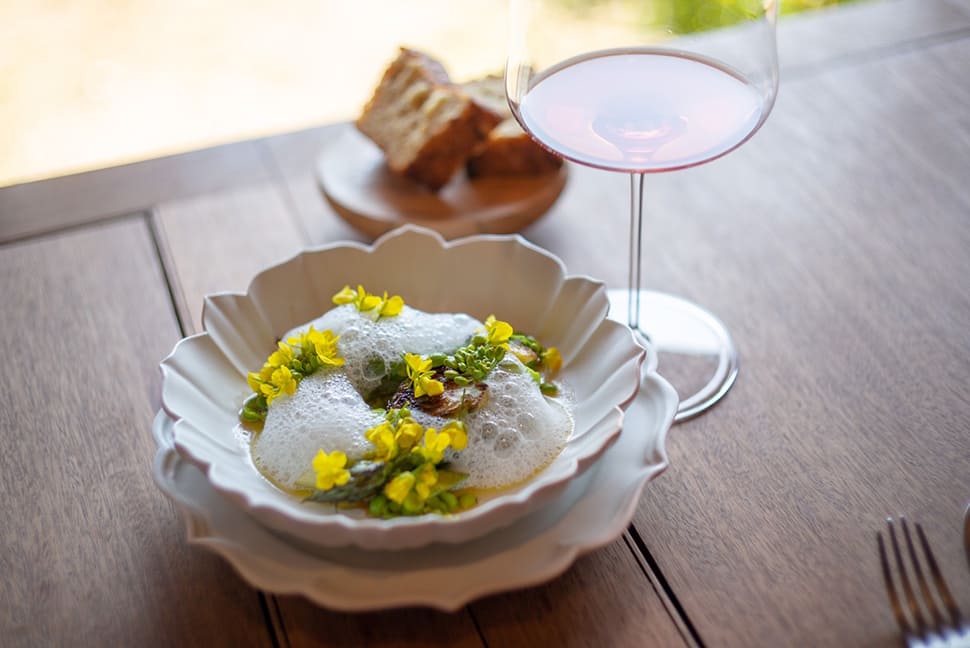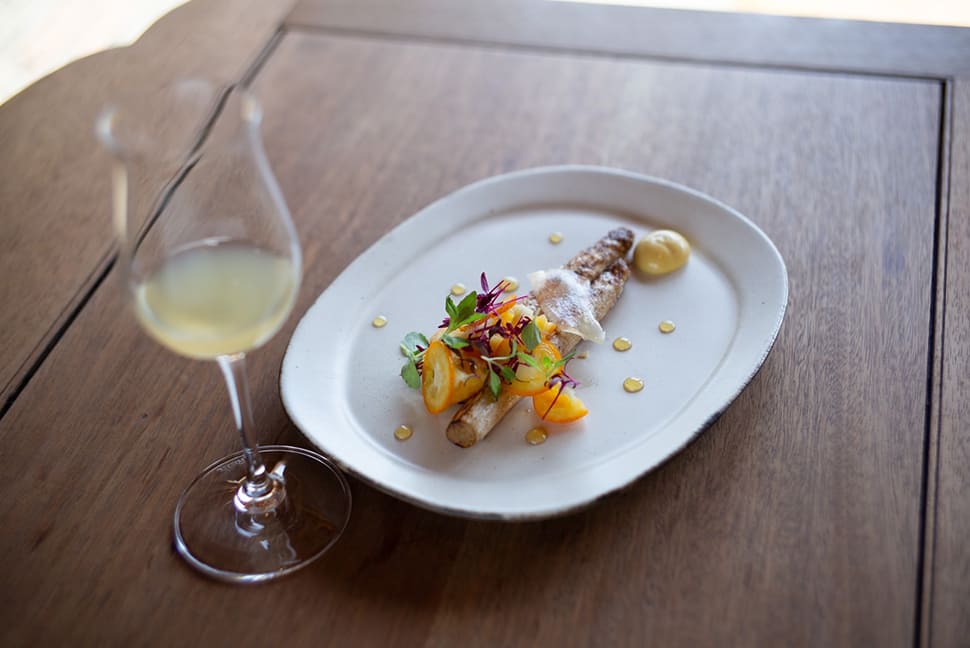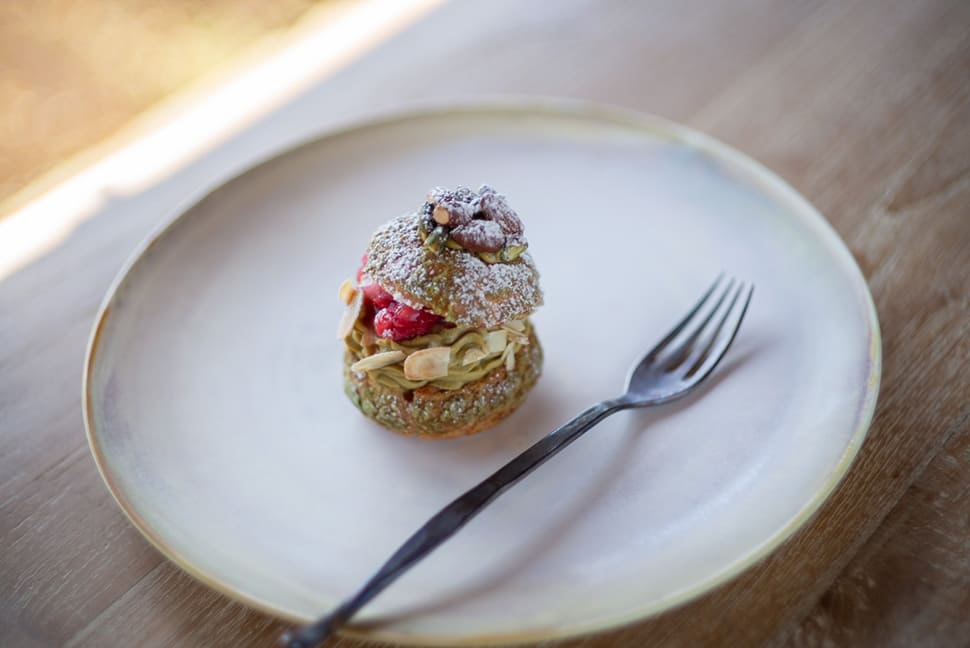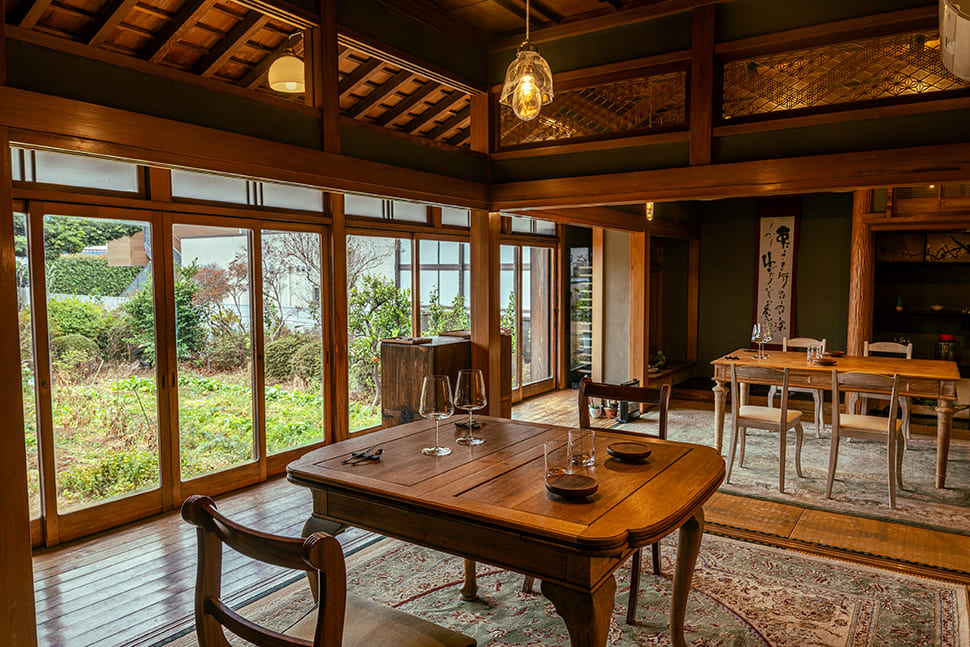DESTINATION RESTAURANTS
May 27, 2025
restaurant KAM

Japan’s ongoing economic slump has led consumers to move away from fine dining — revenue at most of The Japan Times’ Destination Restaurants is buoyed by diners from overseas. What is more, Japanese visitors to regional restaurants are likely to hail from major cities. However, local customers have increased at one restaurant on the Japan Times list: Restaurant Kam, which opened in April 2021 in Kawaguchi, Saitama Prefecture, a commuter town for the Tokyo area. Although more than half of its diners were from Tokyo in the early days, nearly 80% now hail from Saitama.
Restaurant Kam is located in a new residential development about a 10-minute walk from Higashi-Kawaguchi Station, a 40-minute or so train ride, with transfers, from Shinjuku Station. It is an outlying residential area with no tourist attractions, notes owner-chef Masashi Motooka.
“The restaurant where I worked before, Restaurant Bio-S in Fujinomiya in Shizuoka Prefecture, was also a farm-to-table restaurant,” he said. “I was cooking but also doing work in the kitchen garden, and this opened my eyes as to how to bring out the best in vegetables in their various states. I’m not just talking about seasonal produce, but also vegetables harvested early or past their best. Because of my experience there, I never had any intention of opening a restaurant in a big city.”
Motooka, who was born and raised in Hyogo Prefecture, chose as the location for his own restaurant a 70-year-old traditional house left by his wife’s late grandfather, who had run a landscaping business there. The house boasts beautiful fittings and ranma (decorative wooden panels above sliding doors or between rooms), showcasing the skill and techniques of traditional Japanese craftsmanship; it also offered Motooka the opportunity to grow vegetables in the garden. In spring and summer, he grows leafy greens and beans, and in fall he cultivates pumpkins and root vegetables like taro. He grows 30 or so varieties of vegetables and 30 kinds of herbs year-round. Along with vegetables, Motooka grows 12 kinds of fruit, including berries in spring as well as citrus fruits and figs.
The restaurant’s course menu is embellished with produce from the kitchen garden, which features in everything from appetizers to desserts as either the main dish or in a supplementary role. Motooka prepares his gourmet offerings with fruit and vegetables harvested on the day; for example, a risotto might come with the last of the summer corn, and a vegetable mousse with kombu-cured shrimp might be garnished with nira garlic chive flowers.
Motooka said: “I still think about something Kazuhiro Matsuki, the owner of Restaurant Bio-S, said to me. He said it would be great if the life cycle of vegetables could be expressed on the table.”
A ¥16,500 ($110) price for Restaurant Kam’s course menu seems reasonable these days, given the satisfying nature of the dishes. No wonder more and more locals are repeat customers, preferring to eat at Kam rather than going to Tokyo. Instead of opening a restaurant in Tokyo with its eye-watering rents or in a rural area that struggles to attract diners, starting a business in a densely populated Tokyo commuter town could become a trend going forward.
■Sustainable Japan Magazine (Sustainable Japan by The Japan Times)
https://sustainable.japantimes.com/magazine/vol53/53-05




1-13, Totsuka 3-chome, Kawaguchi, Saitama Prefecture